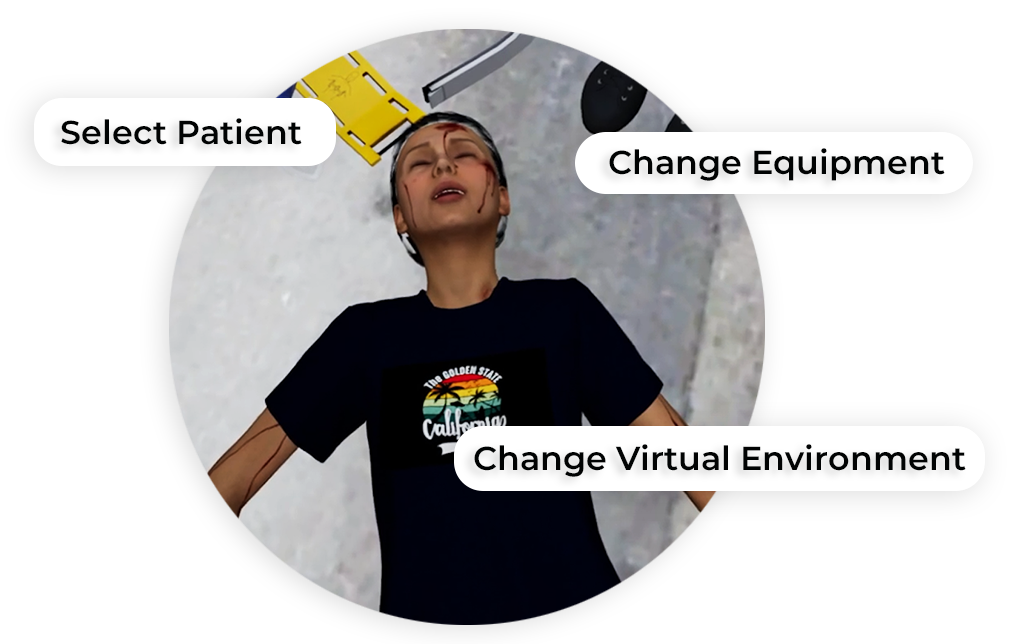EMS Cardiac Arrest
A 24-year-old female on a bike has been hit by a car at 40 miles per hour. There is an open fracture in her left leg and a significant amount of bleeding. As the paramedic at the scene, you need to offer essential medical interventions like controlling bleeding, immobilizing fractures and restoring responsiveness.
This VR simulation for EMS Cardiac Arrest is designed to provide practitioners practice in performing emergency intervention tasks in a realistic environment with a virtual accident victim. It helps test learners on their critical thinking and clinical judgment skills.
- Perform rapid assessment and intervention procedures
- Initiate and execute Advanced Cardiac Life Support (ACLS) protocols
- Apply clinically approved immobilization techniques to manage fracture
- Coordinate with medical team to ensure rapid trauma care

- American Heart Association. (2023). Advanced cardiovascular life support (ACLS) guidelines.
- National Association of Emergency Medical Technicians (NAEMT). (2023). Prehospital Trauma Life Support (PHTLS) and cardiac arrest management.
Customize Your Program
Get rid of the editor. Adopt in-VR customization.
MedVR Education is bringing to you in-VR customization that will enable you to customize your procedural simulations by making selections from a range of feature choices.
- Select patient from a diverse background
- Choose preferred virtual environment
- Configure patient vitals
- Define simulation duration
- Create patient history and train with AI-Humans
- Customize session-end debriefing
- …..many more to come

 Multi-playerSessions
Multi-playerSessions Physics-based Interactions
Physics-based Interactions
Core Skills Training

EMS Cardiac Arrest Management
As a part of this EMS Cardiac Arrest procedure, the learner will begin by checking for victim’s pulse followed by immediate CPR administration to restore responsiveness. Further intervention tasks will include suctioning blood out of the victim’s mouth, performing needle decompression on both sides, applying torniquet to contain bleeding and bandaging the open fracture.
All necessary affordances are provided to complete the procedure with efficiency.
Debriefing
End-of-task debriefing to assess one’s performance, evaluate actions, and get the most out of the training. Examples of topics being touched upon in the debriefing include the following:
- Thorough patient assessment
- Completion of necessary steps
- Correct medication administration to patient
- Sequential completion of task
- Execution of time-sensitive tasks






